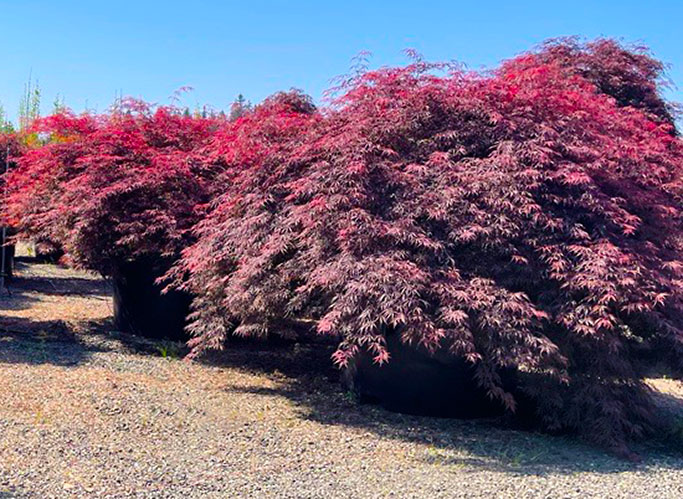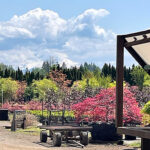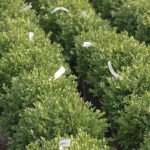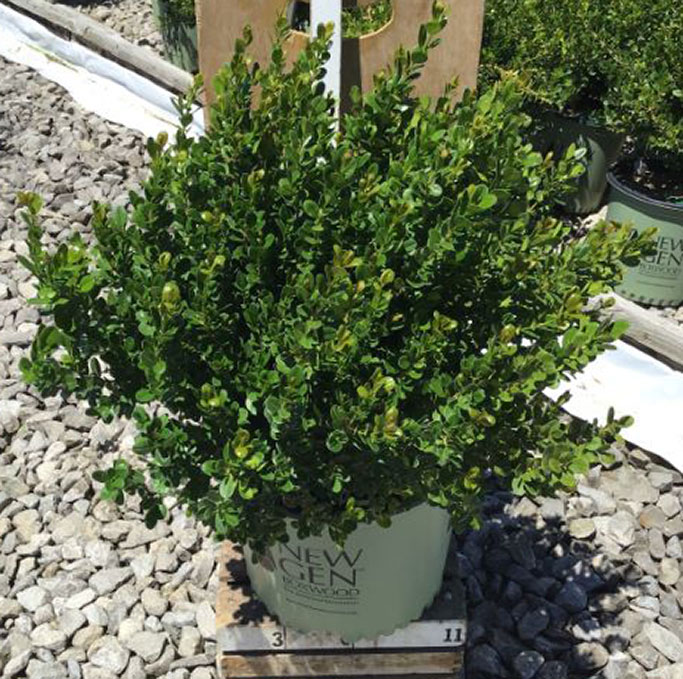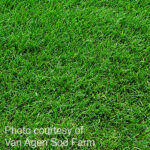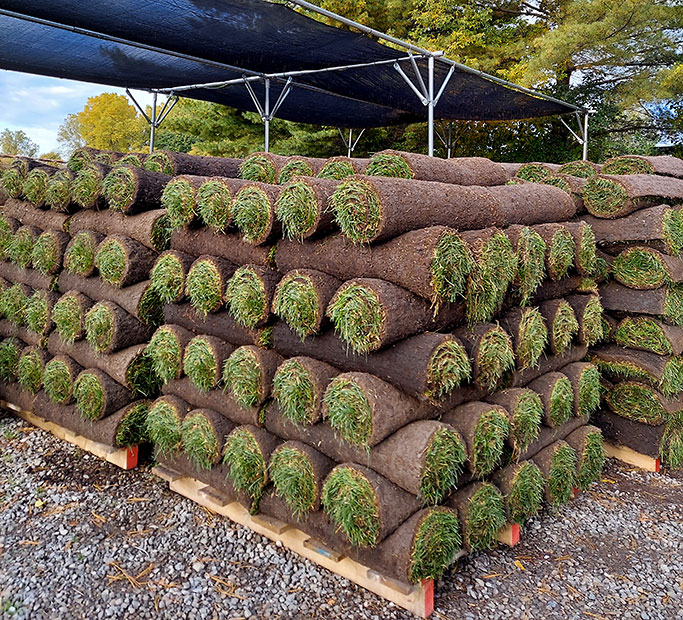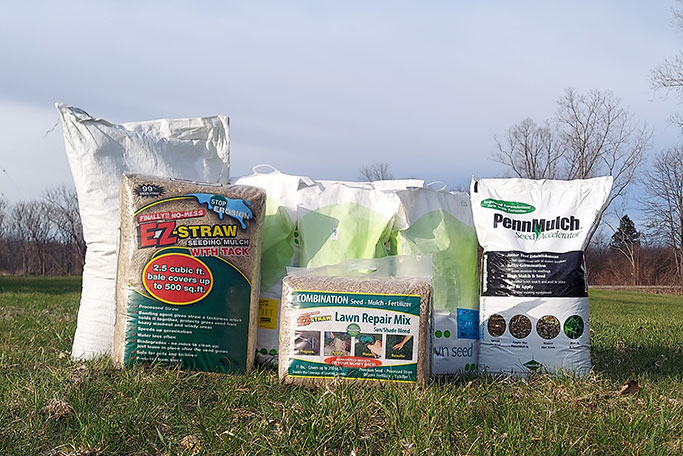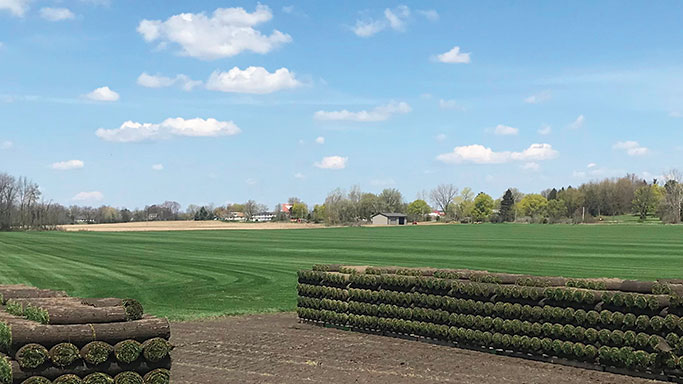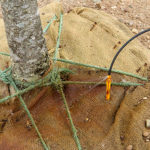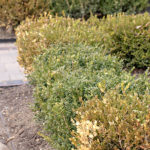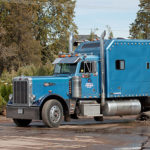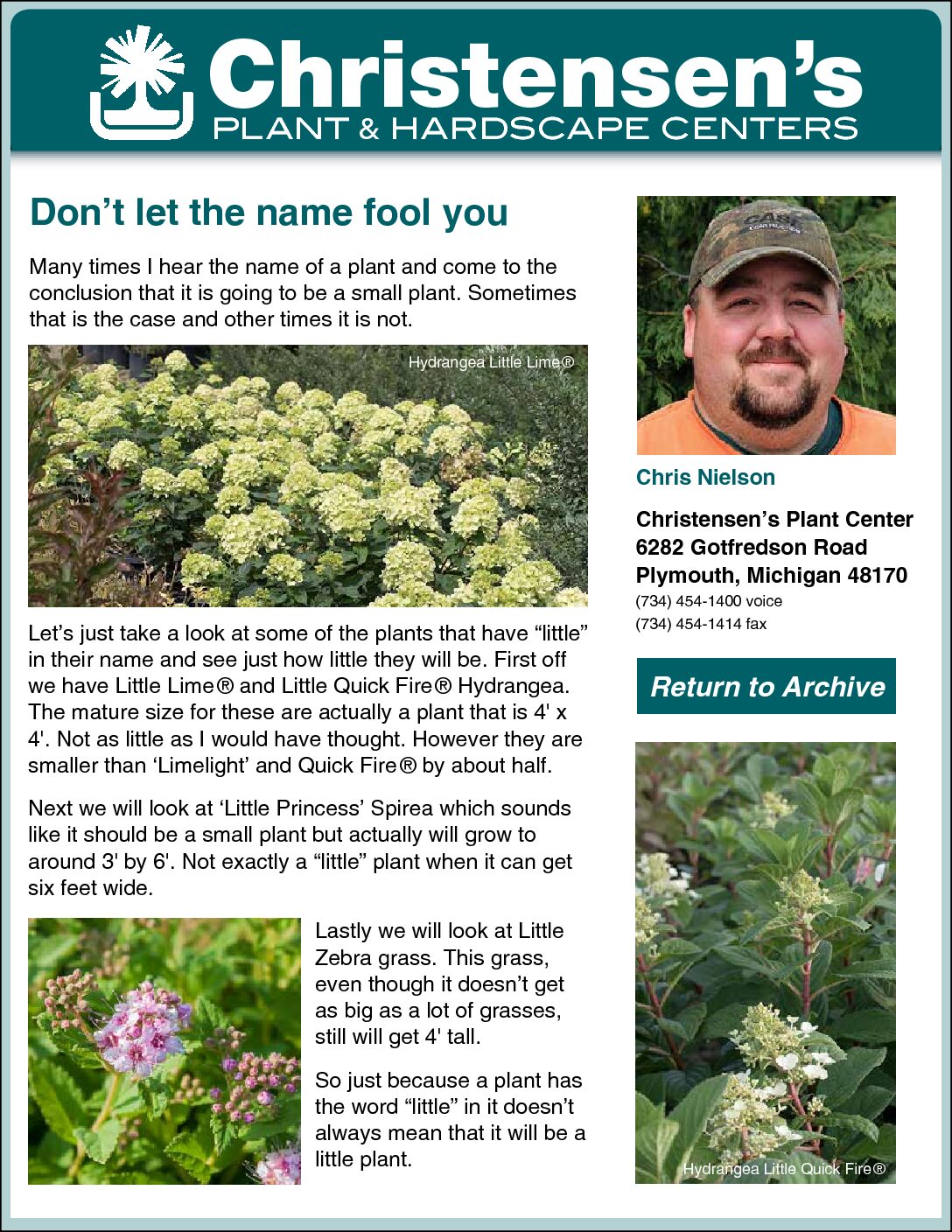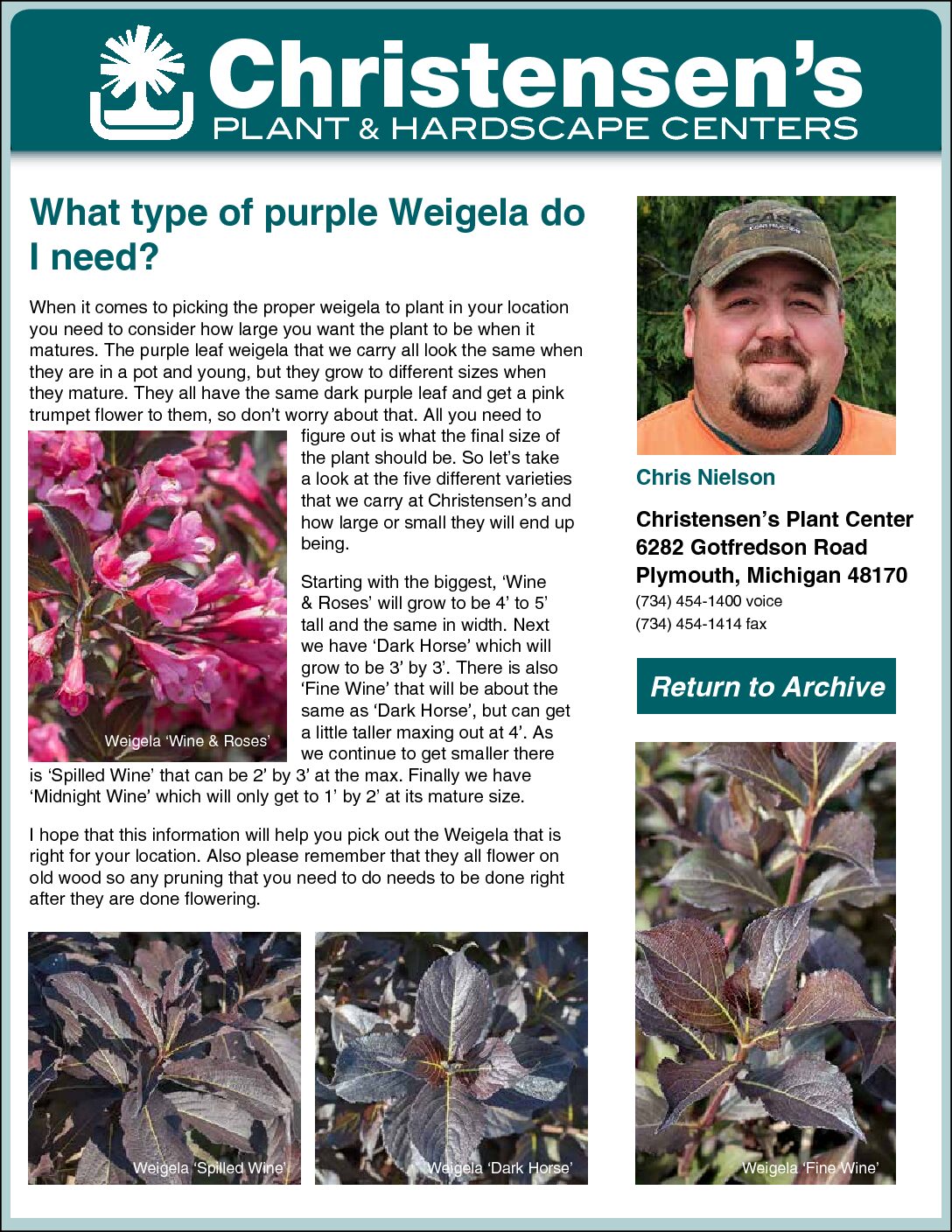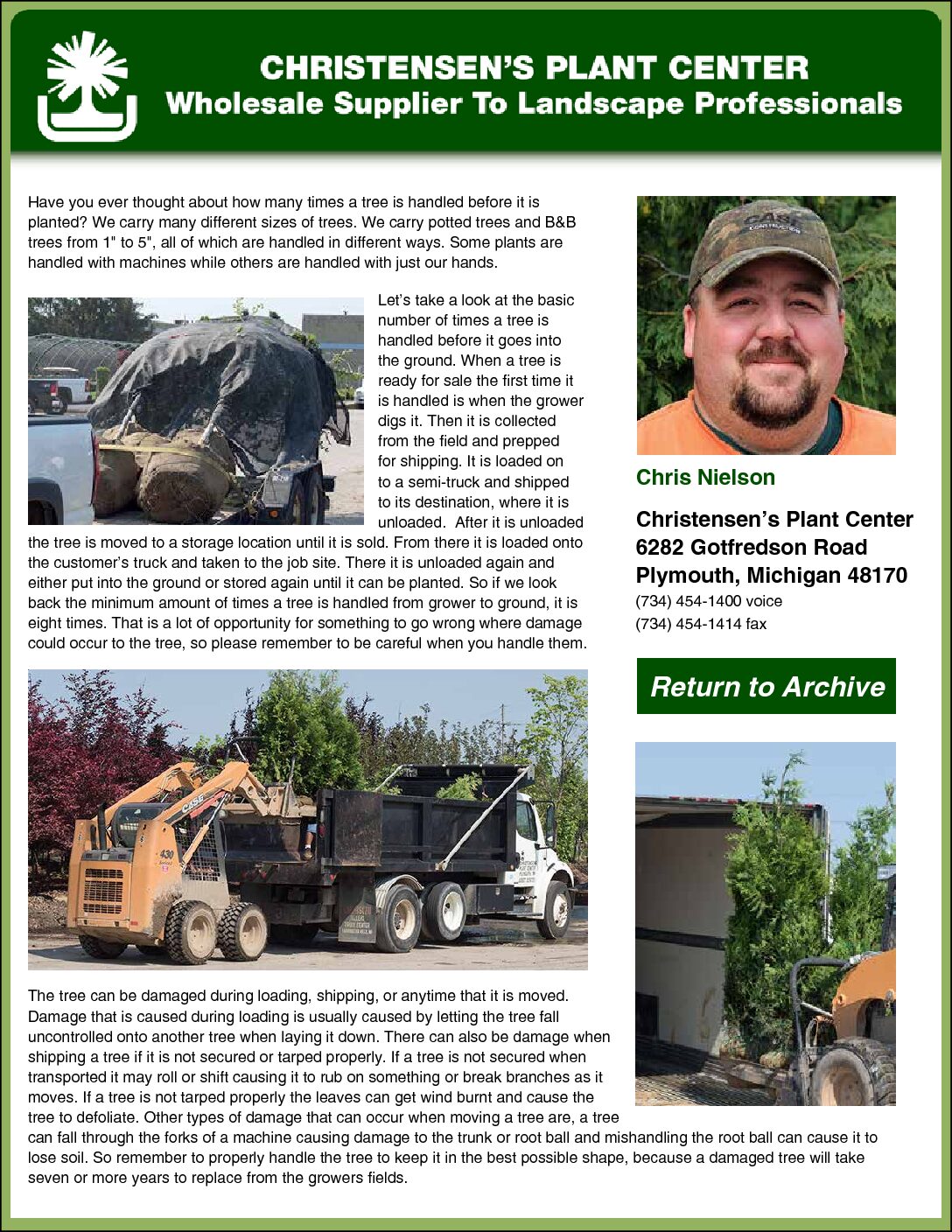A few weeks ago, I got to go out to Oregon and visit several nurseries to see their selection. It was very cool to see the variety of plants that they can grow that we can’t. Geographically, we’re almost straight across the country from each other with our southern borders hovering around the 41-42° North parallel line. We are zone 5 and they are zone 8 or 9 depending on where along the coast you are. It was amazing to hear that they can potentially gain up to 12” on a Japanese maple in one growing season or to see 4.5’ emerald green arbs that they say in a few weeks will be nice 5-6’ arbs. It was a very busy trip as I saw 10 different nurseries in 4 days, but it was totally worth it.
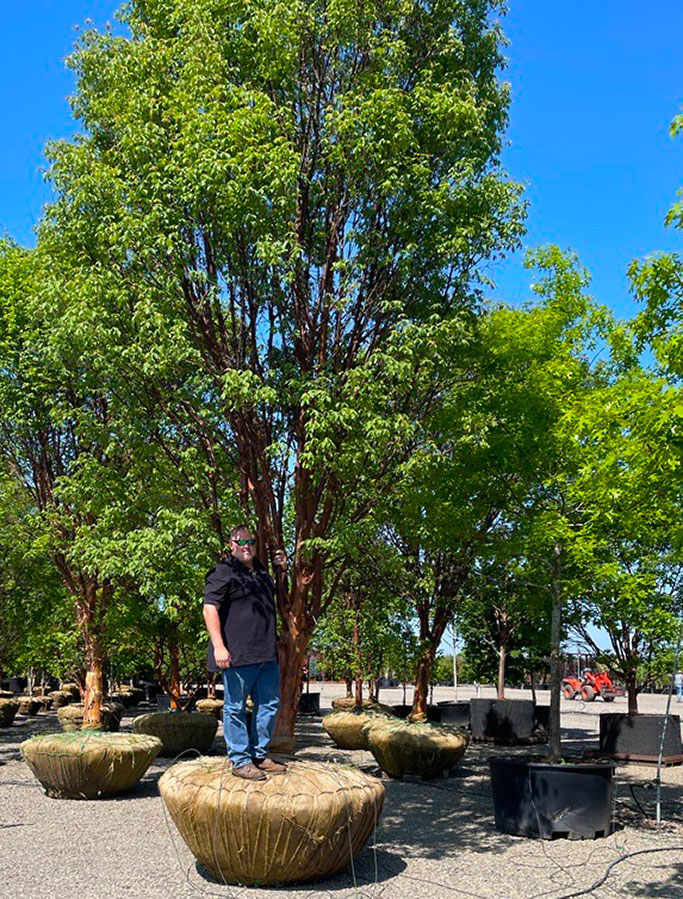
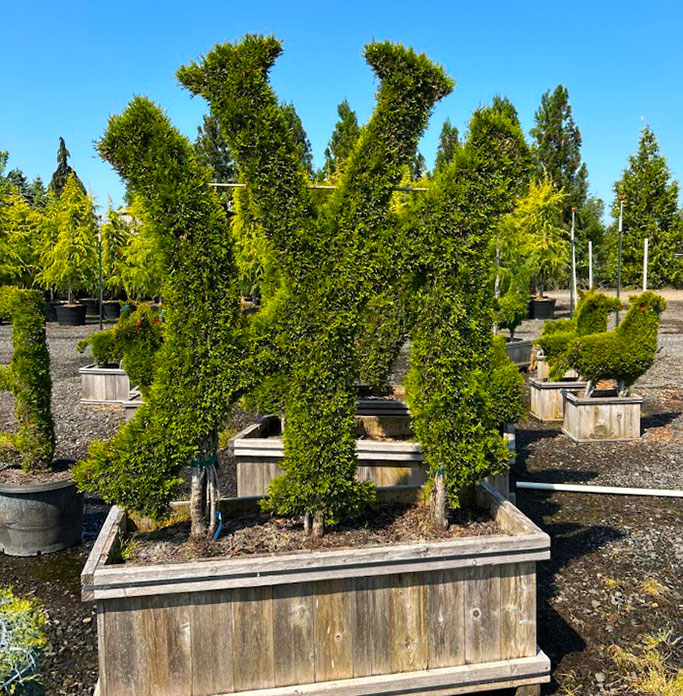
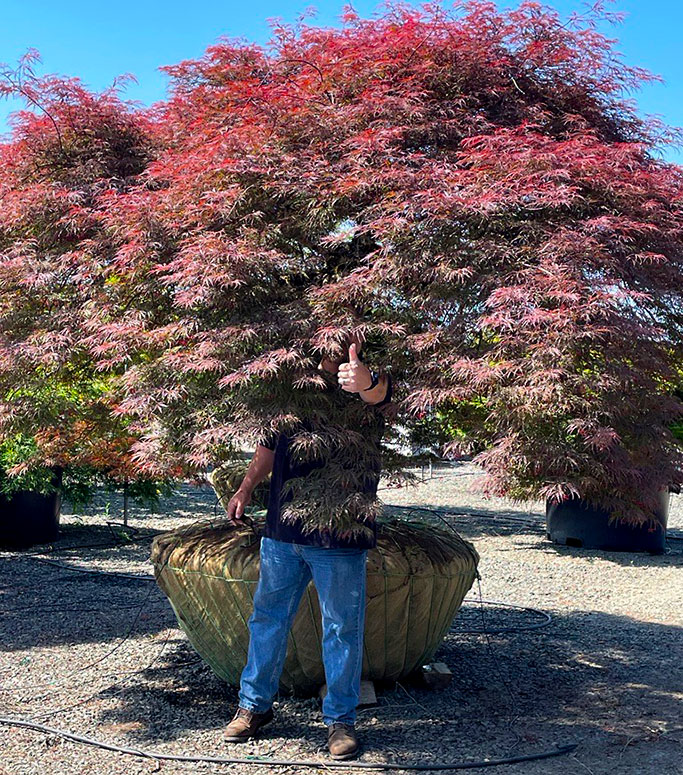
As I drove through all those nurseries, I saw a lot of things that we used to carry but no longer do. I also saw many items that we could get if our customers needed them. The horticulture options are so vast that we cannot possibly stock everything. This got me thinking about things we can get but do not stock. There were all kinds of topiary evergreens, beech, Japanese maples, and all kinds of specialty plants.
What kind of specialty plants you may ask, well here a just a few of the things that I saw while I was out there. They had arborvitae pruned into fish, elephants, deer, ducks, and several other animals. Along with the animals, there were 6’ tall archways that came in two separate pieces so they would fit on a truck. They had several types of trees that were grown on a trellis for lower screens. They also had several types of trees that were grown on a trellis six feet from the ground to extend a privacy fence another four feet up. There were also many different types of topiary evergreens from pompoms, poodles, spirals, and just the random misshapen plant. From small to large they had them.
The last thing that I noticed was that there were a lot of specimen trees and Japanese maples. I saw several very large Japanese maples that were well over six across and tall.
So why am I telling you all of this? It is to remind you that just because we don’t stock something doesn’t mean we can’t get it. We will try our very best to find it for you. So, when you have a customer looking for that specialty item, please ask us if we can find it, you never know what is out there until you ask.
